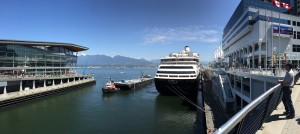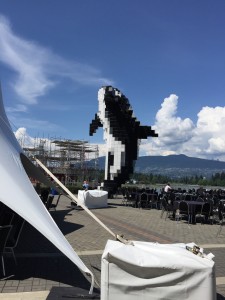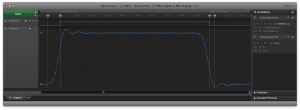So, we’ve recently moved after buying our first home, and among the hundred bajillion other things that changed, we also moved out of the service area of one of our favorite pizza places, Pagliacci Pizza.
Naturally, we were disappointed, and I thought I would take a minute to send them an email asking if they had any plans/thoughts on expanding into our new neighborhood. Plus I figured I could have some fun with it and hopefully make the person answering their emails chuckle.
Subject: None (It was a web form without a subject field)
Hey Pagliacci Folks (In lieu of a more awesome term I haven’t come up with for Pagliacci employees),
My wife and I quite enjoy your mealtime deliciousness of much variety. Pizza, salads, and gelatos (is the plural of gelato, “gelato”?) of all kinds are available. Though I must concede that perhaps our simple tastes don’t live up to the grandness of the variety offered.
We recently find our selves blessed enough by <INSERT DIETY HERE (I prefer the Flying Spaghetti Monster, may his noodly appendage reach out and touch you all)> to purchase a house of our own. To our chagrin, we have found we have made the mistake of not checking the neighborhood for a nearby Pagliacci location, and we are verily dismayed at the loss of accessibility of your fine dining establishment.
So, we beseecheth thee, when doth thou plan to open an Everett location?! Thine family and I shall sorrow for many a fortnight until your fine eatery makes the journey to my northern home.
Most sinceredestlier,
Sir. Rev. Mr. Nigel
[Normal Word Zone Follows]
Hey, you guys rock! When are you guys opening an Everett location?! Seriously. We need your delicious delicious stuff.
Love,
Nigel
Not long afterward I got a response from the general manager of their phone center. I’ll strip out the name for their privacy.
Subject: your epistle (Had to look that one up. Bonus points off the bat.)
Sir. Rev. Mr. Nigel,
Your plea for sustenance would seem a quest of unfortunate end, for no Pagliacci exists in such the Northern world. Alas, it is with heavy heart I tell you this.
But wait, a light appears in the darkness! Even though you must needs venture far to find the food your family cherishes, you are not without merit as a provider of meat and drink, and I have but one request of you.
Send to me forthwith the numbers and street wherein you currently reside, and I will find it in my authority to send hastily in your direction a card of magical proportions, the like of which when you appear in the Southern world again and find your travels once again at Pagliacci, you may present to the shopkeeper there and they will immediately reduce the price upon which our goods are established.
The least this lowly servant can do for someone loyal to the end.
Be safe, and watch the skies as you travel. There are dragons afoot.
PERSON’S NAME HERE
General Manager
Pagliacci Phone Center
Meanwhile, I was away in Vancouver as mentioned in a previous post, so it took me a bit to get them a response.
Dear PERSON’S NAME HERE,
Profuse thanks for your expeditious response, and I beg forgiveness for my untimely delay in responding in due course. The vast journey, carrying thine family’s belongings in my motorized carriage has been a time consuming endeavor.
Your generosity is very kind and greatly appreciated. Thou shalt find that messages sent through the post to POSTAL ADDRESS GOES HERE will find their way to me.
Many salutations and thanks,
Nigel
Sent from my portable computations and communications device.
Shortly there-afterward, another response was mine to be had,
Dear Nigel,
Plans have been laid and maps have been drawn. I have instructed one of my swift and most entrusted messengers with the route to your familial abode. Watch the skies, watch the borders of your lands; for before you might expect it one of my guardians of the post will appear, carrying the package so carefully put into their hands on this very day.
May it find you and your family well and good, in the brightest of health, and may the contents of it create for you a future adventure of proportions beyond your imagining.
Your humble servant,
PERSON’S NAME HERE
Before long, a package showed up in the mail, and I was greeted with far more than I had expected.
Take particular note of that note and the gift card. There was some effort put into the handwriting there. MUST MAINTAIN CHARACTER!!! Extra Extra bonus points.
So, in closing, thanks Pagliacci! Thanks for the awesome food, occasional free pizzas, bag o’ swag as pictured above, and for being top notch folks! Thanks!










